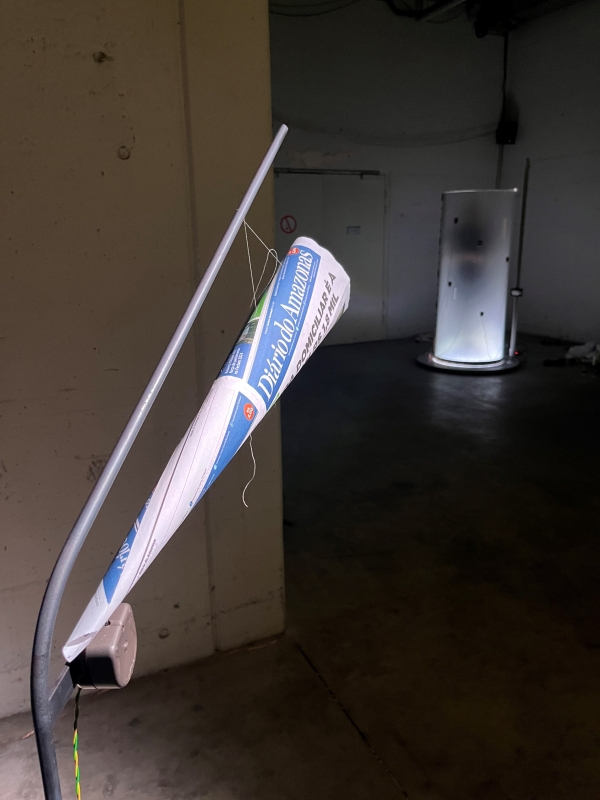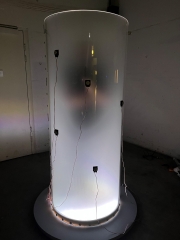As part of a cooperation between the University
of Applied Arts Vienna and the Medical University of Vienna within the framework of PEEK AR 687 (Head Prof. Dr Klaus Spiess;
Emanuel Gollob), the group is once again taking part in the Ars Electronica Festival in Linz (Sept 4th-8th). . The group presents
a transparent double-walled bioreactor in which a tenor sings and whose oral microbiota is sonicated with Caruso's aria and
technical sounds, both from Herzog's Fitzcarraldo. Using a phonograph, he seeks phonetic convergence with a Mura speaker from
the Amazon region and explores the interplay of speech sounds, sound, microbiota and cultural assimilation. The work reflects
on colonial and post-colonial identity.
Anthropophagic Myths, Biopiracy and Opera in
the AmazonIn Werner Herzog's film, the biopirate Fitzcarraldo uses Caruso's interpretation of Massenet's
trauma aria to lure indigenous peoples into rubber extraction - a process that reflects the ongoing industrial exploitation
of the biodiverse indigenous microbiome.
Our installation draws on vocal anthropophagy as part of Amazonian cosmologies,
Amazonian phonetics, microbiome science, deep learning and linguistic post-anthropocentrism. This is combined with the
original soundscape from Herzog's film and sounds from microbiome sonification studies that underline the intrusion of technology
into nature. In a double-walled cylinder in which his own saliva microbiome grows, the tenor performs the dream aria
using a specially constructed phonograph made from the controversial newspaper Diario do Amazonas. The natural need
of his microbiome for certain vocal vibrations under which its growth is amplified begins to consume his voice as that of
the biopirate he symbolises*. The tenor now blends the altered aria into a tonal dialogue with one of the last Amazonian Mura
speakers, whose endangered tonal phonemes are closely linked to the biodiversity of their oral microbiome, so that their vocal
experiments during the festival bring to light the diversity of a resilient oral habitat as well as phonetics.
*In indigenous cosmologies, the states of the Other—the victim—are consumed to assimilate the signs of its alterity. In
these cosmologies, killing and singing are interpreted as similar practices to become the Other through sung or spoken words,
and the term used for the Other or the enemy is "future music." The singer or speaker understands himself as a subject at
the moment in which he declares his uniqueness by hearing himself through the voice of the Other, de-hierarchizing the coexistence
of different species.
https://ars.electronica.art/hope/en/events/anthropophagic-myths-biopiracy-and-opera/https://ars.electronica.art/hope/en/anthropophagic-myth-biopiracy-and-opera-in-the-amazon/ 




